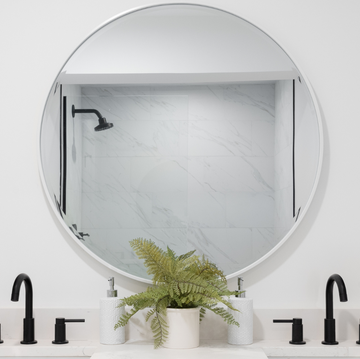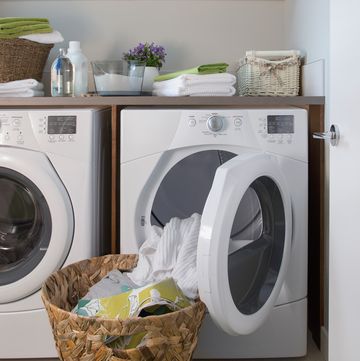Your stash of plastic food containers are what make so-easy leftover dinners on exhausting weekdays a blessed reality. But as handy as they are, they can also take quite a beating from daily use. Keep your tubs in tip-top shape by doing this:
1. Be careful with the microwave.
Yes, we know. But this quick-cook appliance might damage plastic tubs that aren't deemed "microwave safe." Sharon Franke, director of the Kitchen Appliances and Technology Lab at the Good Housekeeping Institute says,"It is highly probable that plastic containers will degrade or become pitted from being used to microwave tomato sauce or a food with a high fat content." Your best bet is to transfer your meal to a plate before heating it up — or opt for glass containers (just watch out for plastic lids).
2. And be wary of the dishwasher, too.
Check your labels! Only toss your containers in with your dinner plates if the manufacturer says they're "dishwasher safe" — not all of them can handle the heat. "There is a possibility that after cleaning containers in the dishwasher that lids will no longer seal tightly," says Carolyn Forte, director of the Cleaning Lab at the Good Housekeeping Institute.
3. And if you can run them through the dishwasher, stick with the top rack.
Just make sure your pieces are secure on the upper rack before starting the load. "If pieces fall to the bottom, they could contact the heating element and melt," Forte says.
4. Prevent stains by blasting them with cooking spray first.
Last night's spaghetti and meatballs turned your container orange? Been there, seen that. Forte recommends spraying a light coating of cooking oil on the inside of your container to create a layer between the food and the plastic. This will help keep your container stain-free, even when you store the most transferrable of foods (*cough* tomato sauce *cough*).
5. Already stained? Soak containers in a mild bleach solution.
Forte recommends combining one tablespoon of liquid chlorine bleach per cup of warm water, then pour the solution directly into the containers, making sure you have enough that it covers the entirety of the discolored plastic. Soak for 30 minutes and then wash the container in hot, soapy water. And since this is bleach, you need to make sure you rinse, rinse, rinse.
6. Always do a quick rinse as soon as you empty your container.
By immediately removing the food and juices that are stuck on the sides, you'll help eliminate smells and stains as early as possible. In an ideal world, you'd wash the containers with soap and hot water at this time too, but we'll take what we can get.
7. Zap bad odors with baking soda.
Freshen up already-smelly containers by using this abrasive, but gentle, natural deodorizer. Just wipe the surfaces with a clean sponge that's sprinkled with baking soda then wash before using.
8. If it still smells, give newspaper a shot.
Stuff a clean (albeit, smelly) container with crumpled newspaper, then put the lid back on. Let it sit for a day or two to allow the paper to soak up the odors. Afterwards, wash the container in hot, soapy water before storing more food in it and toss the paper.
9. Admit when it's time for some new ones.
After all, these plastic storage devices aren't meant to last forever. Once they're no longer functional (read: the lid won't stay put or the bottom is warped) or they're stained beyond belief, invest in new ones. Here's are some lab-tested containers our GH Institute recommends.

Lauren is a senior editor at Hearst. She was previously the senior editor at WomansDay.com and the home editor at GoodHousekeeping.com and HouseBeautiful.com. Her book club, ramen, and jean jackets are a few of her favorite things.














